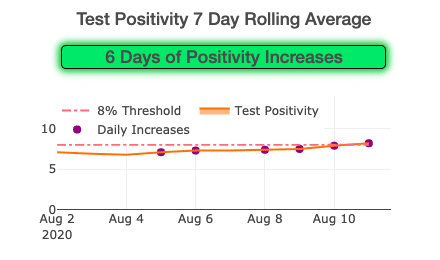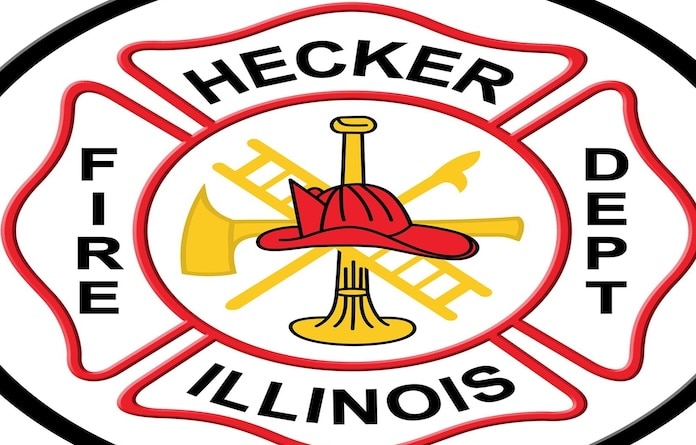New COVID restrictions take place Tuesday
Gov. JB Pritzker announced Sunday that the metro east region would have new restrictions put in place effective Tuesday to help slow the spread of the coronavirus.
The move came as the region experienced three consecutive days of positivity rates above 8 percent, which was one of the metrics Pritzker and the Illinois Department of Public Health said would trigger the mitigation measures being put in place.
“Throughout the COVID-19 pandemic, I have made it clear that neither arbitrary dates on a calendar nor political pressure will dictate Illinois’ efforts to protect our people. If the data shows we need to go backwards in our reopening, I won’t hesitate to tighten restrictions to protect our collective health,” said Pritzker. “Working with local officials in the metro east region and across the border in St. Louis, we are implementing stricter mitigations that account for the unique factors in this region. (IDPH Director) Dr. (Ngozi) Ezike and I are imploring local leaders and residents alike: if you haven’t been taking this seriously yet, now is the time to start.”
Beginning Tuesday, a host of restrictions will take effect and last for at least two weeks. Read the full mitigations by clicking here.
Bars will close at 11 p.m. like they currently do in St. Louis, there will be no ordering, seating or congregating area at the bar, all bar patrons must be seated at tables, tables must be six feet apart, there will be no congregating indoors while waiting for a table or to order, there will be no dancing or standing indoors and reservations will be required for each party.
Restaurants will also close at 11 p.m., have six feet between tables and prohibit standing or congregating indoors or outdoors while waiting for a table or exiting. Restaurants will also limit tables to six people or fewer and require reservations for each party.
Finally, meetings and social gatherings should be limited to 25 guests or fewer or 25 percent of overall room capacity, all reception halls will be closed, party buses will be prohibited and gaming venues and casinos will close at 11 p.m. and be limited to 25 percent capacity.
If the positivity rate over the two weeks the measures are in place averages less than or equal to 6.5 percent, the measures will be lifted. If it averages between 6.5 and 8 percent, the mitigations will remain in place. If the positivity rate remains over 8 percent, more stringent restrictions will be put in place, such as closing indoor dining and drinking.
State Sen. Paul Schimpf (R-Waterloo) lambasted the restrictions.
“Gov. Pritzker’s arbitrary and misguided sanctions…come at the worst possible time as communities are attempting to resume school and rebuild their businesses.,” he said. “COVID-19 hospitalization rates in these counties remain low with no threat of exceeding medical capacity. Nevertheless, the governor has decided that bar stools, reception halls and groups of 26 or more people are not allowed for the next fourteen days. These new restrictions represent an absurd attempt to show that he is ‘doing something,; but in reality will do little more than to wreak further economic havoc on the families of this region.”
The restrictions come as Monroe County is no longer among the counties in the state at a warning level for coronavirus set by the IDPH.
“Our numbers are so small we can bounce on and off that list,” Monroe County Health Department Administrator John Wagner said. “What I’m really concerned about is our region approaching that 8 percent number for positivity rate.”
For the week of Aug. 2, Monroe County failed only one of the metrics the IDPH uses to determine whether to list a county at a warning level. It had 116 cases per 100,000 people, and the goal is 50.
Other indicators are number of deaths, test positivity rate, ICU availability, weekly emergency department visits, weekly hospitalizations, tests performed and the percentage of COVID-19 cases associated with clusters or outbreaks.
The county’s overall case total now stands at 370 after recording 79 new cases since Aug. 4. Total deaths, however, remain at 13.
There were 10 new cases reported Tuesday, eight new cases Monday, two new cases Sunday, 10 new cases Saturday, four new cases Friday, five new cases Thursday and four more cases Wednesday.
While Monroe County has been removed from the state’s list this week, the region saw nine days of positivity rate increases in its seven-day rolling average. The positivity rate was at 9.4 percent Aug. 15.

The region has also had two days of hospitalization increases since Aug. 6. It has 35 percent medical and surgical bed availability and 45 percent ICU bed availability.
In a related matter, Gov. Pritzker announced new rules last Friday providing enforcement options to ensure organizations comply with health guidelines as the virus surges in Illinois.
The emergency rules apply to businesses, schools and child care establishments and focus on face masks and capacity limits.
Local law enforcement and health departments can now give a written warning and encourage a business to voluntarily comply with public health guidance.
If it does not comply, it can be given an order to have some or all of its patrons leave the premises to comply with public health guidance and reduce risks. If it still refuses to comply, a business can receive a class A misdemeanor and be subject to a fine ranging from $75-$2,500.
State Sen. Paul Schimpf (R-Waterloo) did not agree with that move.
“If Gov. Pritzker truly believes that our situation is dire enough to warrant new penalties for COVID-19 noncompliance, he should be calling a special session of the Illinois General Assembly,” Schimpf said. “Circumventing the legislative process won’t make more people wear masks. Instead, it will only further diminish trust in our state government.”
Wagner said he did not anticipate those enforcement options being used much locally.
“Most of it’s all done on an education basis,” Wagner said of enforcement. “Most of our places have been pretty good, so I don’t see that being a real big issue.”
One of the latest new cases is at Oak Hill Senior Living & Rehabilitation Center in Waterloo, where another staff member recently tested positive. No residents have contracted the virus at that facility, and the most recently infected staff member has been placed in quarantine.
Wagner also reiterated that his office does not track how many of the people who have had the virus are symptomatic or asymptomatic.
“The problem is they’re quarantined for 10 days, and they’re symptomatic one day and asymptomatic the next day,” Wagner told the Republic-Times. “It would be impossible for anybody to give you that number.”
Overall, the Waterloo zip code has had 168 cases (2,917 tests), the Columbia zip code has had 166 (1,312 tests) and the Valmeyer zip code has had 17 cases (159 tests), according to the IDPH.
At last count, 40 cases are active and two residents are hospitalized with the virus.
Wagner also clarified that test results are attributed to the place of residence an individual lists on their paperwork when they get tested – not where the actual test was performed.
He further stressed that coronavirus tests given authorization by the Food and Drug Administration have a high level of accuracy.
“The most accurate is the pharyngeal swab where they go way back in the nose,” he said. “The cheek swab and the nasal swab are not as accurate, but you’ve got to go with the test that’s available.”
Per the FDA, there are two types of coronavirus tests: diagnostic tests that show if someone has an active infection and antibody or serological tests that look for antibodies created when someone has COVID-19.
The FDA cautions that those latter tests cannot diagnose active infections and researchers do not yet know if people with coronavirus antibodies are immune to the virus.
For diagnostic tests, there are both molecular tests that detect the virus’s genetic material and antigen tests that detect specific proteins on the surface of the virus.
Antigen tests are usually faster, cheaper and less invasive, but also less effective because they cannot “definitively rule out active coronavirus infection.”
“Positive results are usually highly accurate, but negative results may need to be confirmed with a molecular test,” the FDA wrote on its website regarding antigen tests.
Conversely, molecular tests are more time-consuming to process, expensive and invasive. But they are also more accurate.
“This test is typically highly accurate and usually does not need to be repeated,” the FDA reports.
St. Clair County has had 5,005 total positive tests and 160 coronavirus-related deaths as of Sunday. A total of 52,111 tests have been performed there.
To the south, Randolph County has seen 569 total confirmed cases, 88 of which are active. Seven people have died from the virus. A total of 7,468 people have been tested.
Statewide, there are 209,594 cases of coronavirus and 7,782 deaths, according to the IDPH.
Missouri has recorded 69,417 confirmed cases and 1,402 deaths as of Tuesday. That includes 16,420 cases in St. Louis County and 5,593 cases in St. Louis City, according to the Missouri Department of Health & Senior Services.
Nationally, more than 5.4 million people have contracted the virus, while at least 170,846 people have died.
Worldwide, there are over 21.9 million cases of coronavirus and at least 774,963 COVID-19-related deaths.






